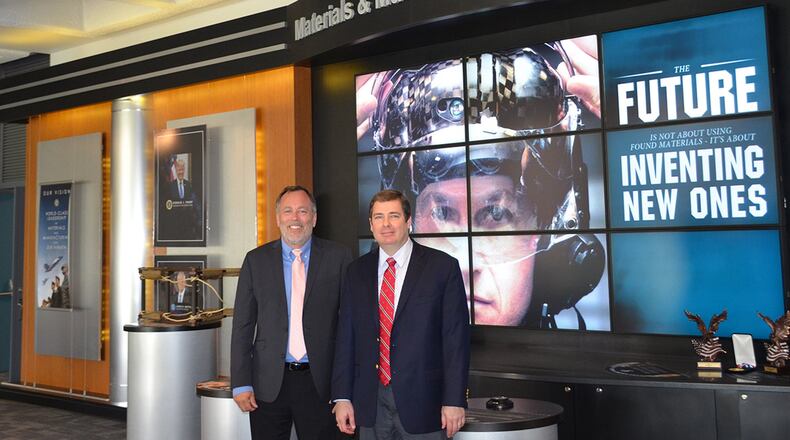Carter is a principal materials engineer and lead of the Materials Affordability Team in the Logistics Systems Support Branch.
Evans is currently detailed as the technical director of the Plans and Programs Directorate. While in the Materials and Manufacturing Directorate, Evans was assigned as the research leader for the Hardened Materials and Processing Research Team in the Photonic Materials Branch.
The AFRL Fellows program recognizes outstanding scientists and engineers in research achievements, technology development and transition achievements or program and organizational leadership. Individuals selected for this honor represent the top 0.2 percent of AFRL’s professional technical staff and join an elite professional cadre.
Carter is nominated for technology development and transitions achievements. He leads a 30-member team from across the directorate in providing solutions for issues with materials on Air Force systems.
He has created and executed seven consecutive advanced technology demonstrators with more than 60 technologies transitioned to multiple weapon systems and multiple major commands. These technologies have improved mission capability and lifecycle sustainment costs by more than $10 billion while saving millions of maintenance hours.
Carter has many levels of awards and recognition, including the AFRL Commander’s Cup award, DOD Manufacturing Technology Achievement Award, USAF Civilian Medal of Achievement and the Affiliates Societies Council’s Outstanding Engineers and Scientists Award.
“I am truly honored to receive this award,” said Carter. “So much credit goes to my colleagues for helping to make this happen.”
Evans is nominated for several research achievements. Evans is recognized as a subject matter expert by the global academic community in photorefractive materials and liquid crystal hybrid devices, and by the tri-service community, industrial base and foreign partnering governments for laser-hardened (sensor protection) materials.
Evans has made pioneering contributions in ferroelectric nanocolloids, maturation of old and development of new photorefractive materials, and his seminal work on the concept of using photo-induced electric field generating windows has eliminated power requirements in liquid crystal devices.
He has more than 145 publications and nine patents (with four more pending), and is a fellow of the Optical Society of America, the International Society for Optics and Photonics and the American Physical Society.
“I am extremely grateful to have been selected for AFRL fellow. I am deeply indebted to the many scientist and engineers in the Materials and Manufacturing Directorate and throughout the international research community,” said Evans.
Dr. Timothy J. Bunning, chief scientist of the Materials and Manufacturing Directorate, said, “I am ecstatic for both Doug and Dean. Although they have contributed to the mission of AFRL much differently, the fact that AFRL can recognize the best of the best regardless of whether the individual’s contribution is in basic science, applied science, tech transition, or program/organizational activities is a real strength to the AFRL Fellows Program.
“I am excited for both Doug and Dean, their intimate teams and the local organizations which have supported them along the way. Although the Fellow award is given to the individual, it is enabled by the local environment of the individual.”
In addition to recognition, each new AFRL fellow receives a two-year, $300,000 research grant to further his or her chosen research. The eight fellows selected this year bring the total number of AFRL fellows awarded since 1987 to 199.
A banquet will be held in their honor at the National Museum of the U.S. Air Force Oct. 25.
About the Author
